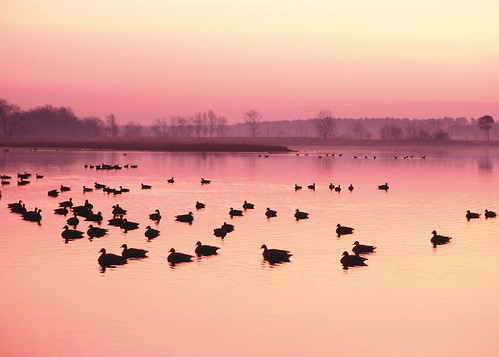
The Chesapeake Bay Watershed, the largest estuary in North America, covers 64,000 square miles and includes more than 150 rivers and streams that drain into the bay. Roughly one quarter of the land in the watershed is used for agricultural production, and agricultural practices can affect the health of those rivers and streams, and ultimately the bay itself.
While the health of the Chesapeake Bay has improved since the 1970s, excess nutrients and sediment continue to adversely affect water quality in local rivers and streams, which contributes to impaired water quality in the bay.
USDA’s Natural Resources Conservation Service is working with several agencies and organizations to test innovative water quality trading tools that will help improve the bay’s water quality, benefiting the more than 300 species of fish, shellfish and crab, and many other wildlife that call the Chesapeake Bay home.
In 2012, NRCS awarded Conservation Innovation Grants (CIG) to 12 entities to help develop water quality trading programs; five of these recipients are in the Chesapeake Bay Watershed.
USDA is excited about water quality trading’s potential to achieve the nutrient reductions necessary to improve water quality at a lower cost than regulation alone. For example, a wastewater treatment plant could purchase a nutrient credit rather than facing higher compliance costs if structural improvements are required on site. This is advantageous because it saves regulated industries money, and can provide additional income for the agricultural community by supporting adoption of conservation practices that reduce nutrient runoff.
The Chesapeake Bay grant recipients are the Alliance for the Chesapeake Bay; the borough of Chambersburg, Penn.; the Chesapeake Bay Foundation; the Virginia Department of Conservation and Recreation; and the Maryland Department of Agriculture.
NRCS recently met with these organizations and agencies to share expertise and identify common obstacles and priorities. During the meeting, NRCS briefed recipients on trading tools and policies, and invited groups working on water quality trading programs across the country to share ideas. The Chesapeake Bay CIG awardees will continue to meet throughout the duration of their projects to share updates and collaborate on innovative solutions to water quality challenges in the Chesapeake Bay.
These grants are part of the largest conservation commitment by USDA in the bay region. NRCS works side by side with farmers and ranchers to improve water, air and soil quality through conservation.
Follow NRCS on Twitter.
Check out other conservation-related stories on the USDA blog.



